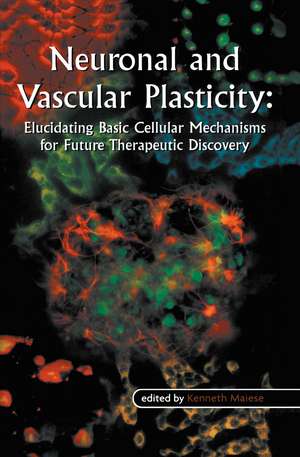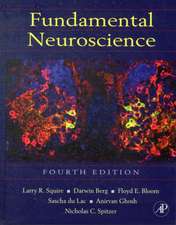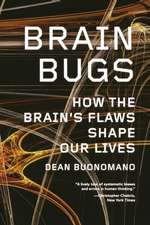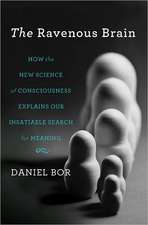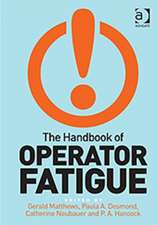Neuronal and Vascular Plasticity: Elucidating Basic Cellular Mechanisms for Future Therapeutic Discovery
Editat de Kenneth Maieseen Limba Engleză Paperback – 22 oct 2012
| Toate formatele și edițiile | Preț | Express |
|---|---|---|
| Paperback (1) | 945.92 lei 6-8 săpt. | |
| Springer Us – 22 oct 2012 | 945.92 lei 6-8 săpt. | |
| Hardback (1) | 953.20 lei 6-8 săpt. | |
| Springer Us – 30 mar 2003 | 953.20 lei 6-8 săpt. |
Preț: 945.92 lei
Preț vechi: 1153.57 lei
-18% Nou
Puncte Express: 1419
Preț estimativ în valută:
181.00€ • 189.46$ • 150.65£
181.00€ • 189.46$ • 150.65£
Carte tipărită la comandă
Livrare economică 31 martie-14 aprilie
Preluare comenzi: 021 569.72.76
Specificații
ISBN-13: 9781461350026
ISBN-10: 1461350026
Pagini: 328
Ilustrații: XIV, 305 p.
Dimensiuni: 155 x 235 x 17 mm
Greutate: 0.46 kg
Ediția:Softcover reprint of the original 1st ed. 2003
Editura: Springer Us
Colecția Springer
Locul publicării:New York, NY, United States
ISBN-10: 1461350026
Pagini: 328
Ilustrații: XIV, 305 p.
Dimensiuni: 155 x 235 x 17 mm
Greutate: 0.46 kg
Ediția:Softcover reprint of the original 1st ed. 2003
Editura: Springer Us
Colecția Springer
Locul publicării:New York, NY, United States
Public țintă
Professional/practitionerDescriere
Galen in the 2nd century AD could be considered one of the earliest researchers who attempted to bridge the gap between basic science and clinical medicine. Galen is given initial credit for the recognition that vital organs of the body are exquisitely dependent upon the intact function of the circulatory system. The doctrines of Galenic physiology stated that blood was produced in the liver, flowed to the heart to obtain "vital spirits", and subsequently bathed the brain to gain "animal spirits". The "vital spirits" described by Galen were later disclosed to consist of oxygen. Oxygen was discovered independently by Schiele in Sweden and by Priestly in England. It was named oxygen (acid-former) by Antoine Lavoisier (1743-1794) of France. Lavoisier made significant medical discoveries concerning oxygen's role in respiration. In animal experiments, Lavoisier and others discovered that anoxia could rapidly lead to death. The initial work by these investigators helped provide direction for modern clinical science and the treatment of disease, especially concerning disorders of the nervous system. Remarkably, our understanding of human disease continues to grow at an exponential rate. At times, the accumulation of knowledge of the cellular components of clinical disease exceeds all prior expectations held just a few years ago, such as evidenced by the recent cloning of the human and mouse genomes. Despite theses advances, both biomedical scientists and clinicians sometimes are at a loss to recognize the crucial link between basic science discovery and the development of therapeutic regiments for clinical disease.
Cuprins
Contributors. Preface. 1. Transformation into treatment: novel therapeutics that begin within the cell; K. Maiese, Zhao Zhong Chong, Jing-Qiong Kang. 2. Cholinergic plasticity and the meaning of death; M. McKinney, K. Baskerville, D. Personett, K. Williams, J. Gonzales. 3. Restorative potential of angiogenesis after ischemic stroke; Ling Wei, Kejie Yin, Jin-Moo Lee, J.Y. Chao, Shan Ping Yu, Teng-Nan Lin, Chung Y. Hsu. 4. Vascular endothelial function: role of gonadal steroids; S. Piper Duckles, D.N. Krause. 5. Alterations of synaptic transmission following transient cerebral ischemia; Zao C. Xu. 6. The future of brain protection: natural alternatives; K.I. Maynard. 7. Iron's involvement in the molecular mechanisms and pathogenesis of Alzheimer's disease; R.J. Henderson, J.R. Connor. 8. Ethanol-induced neurodegradation: basic mechanisms and therapeutic approaches; P.L. Hoffman. 9.Regulation of neural stem cells in the adult mammalian brain; Feng C. Zhou, R.P. Singh. 10. G-protein mediated metabotropic receptors offer novel avenues in neuronal and vascular cells for cytoprotective strategies; Zhao Zhong Chong, Jing-Qiong Kang, K. Maiese.
